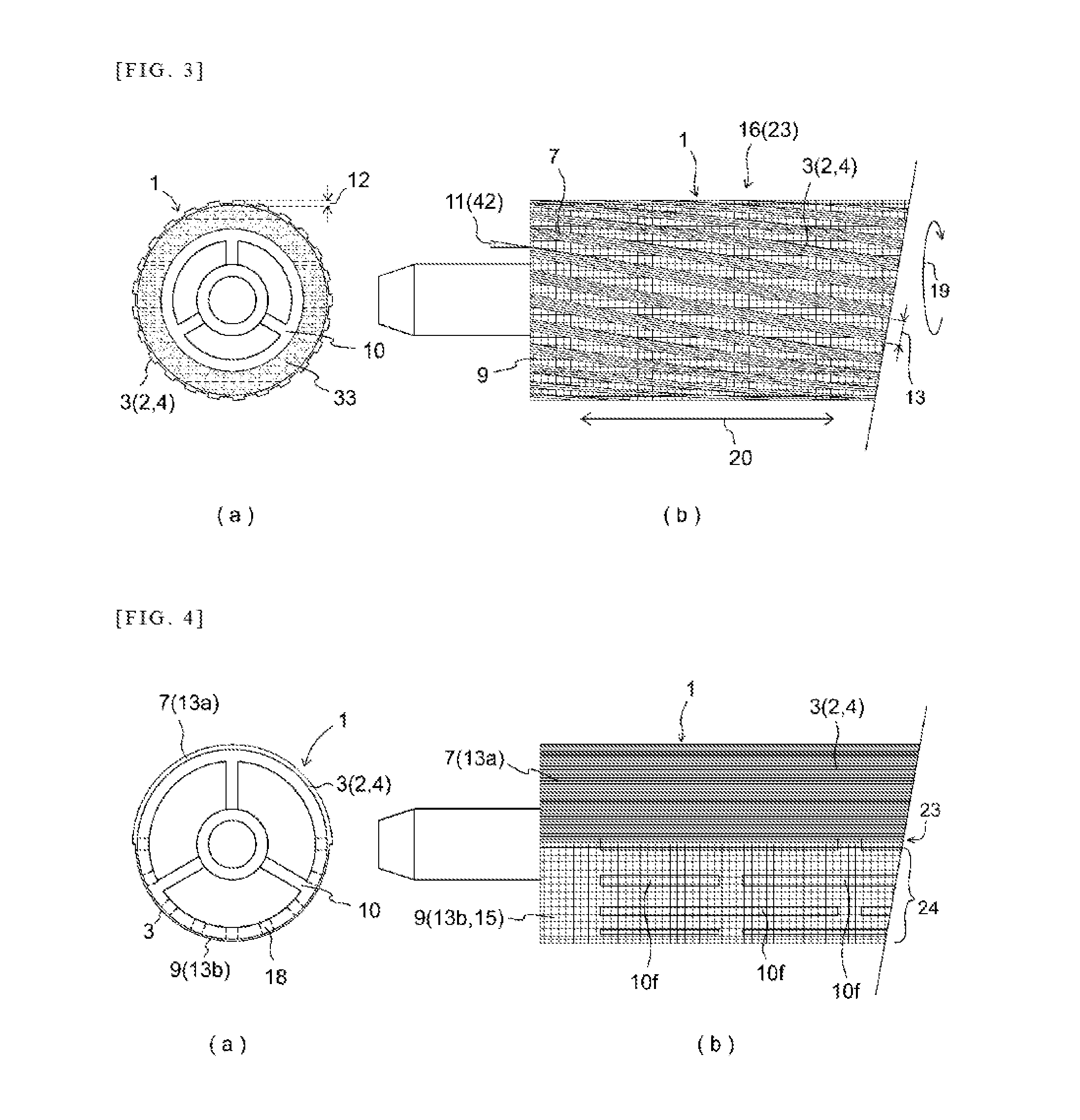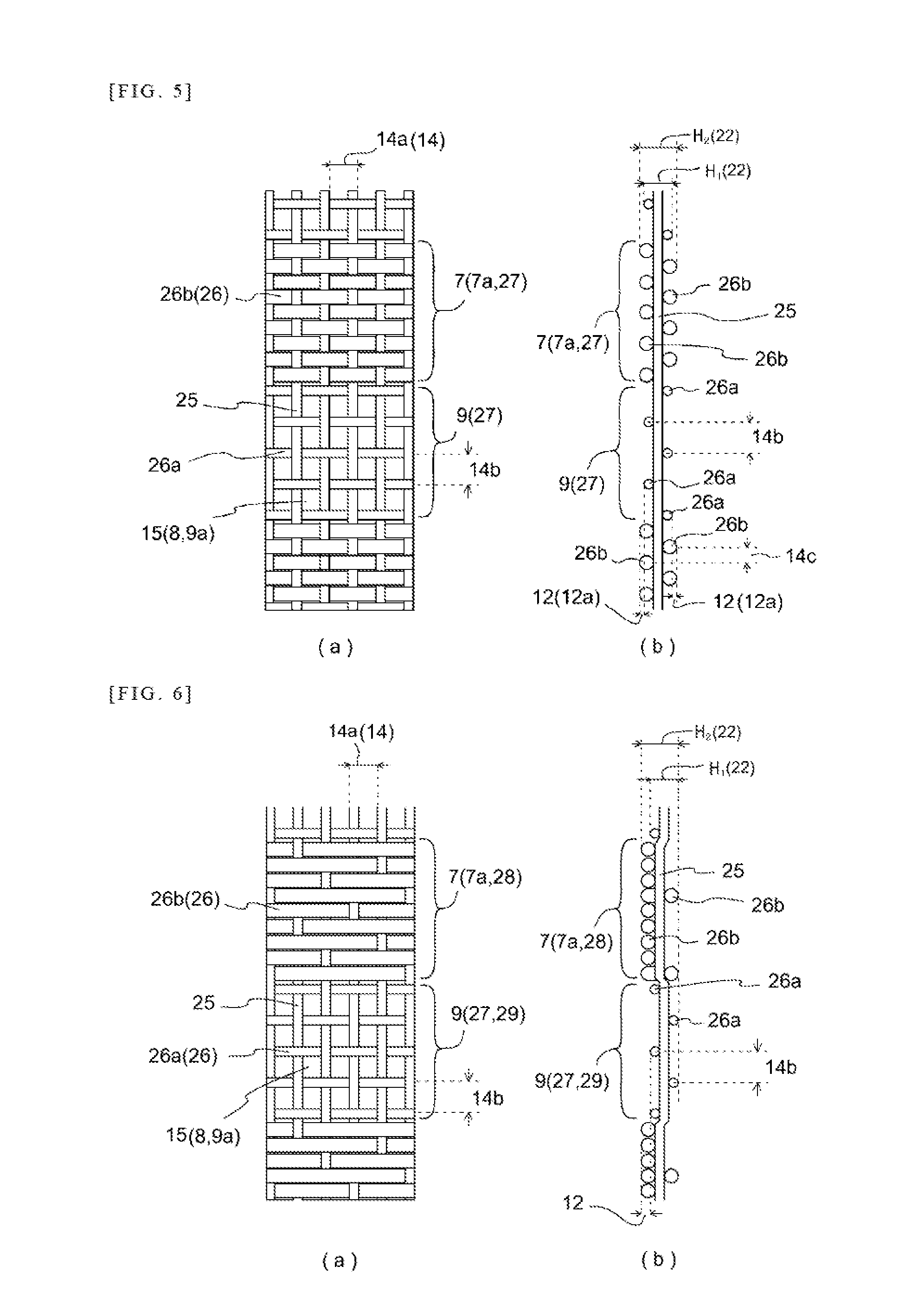Where such a roller conveys a conveyed object in the form of sheet-like paper, film, fabric, or the like,
paper dust, dust, fibrous waste, and the like will adhere to the surface of the roller, causing degradation of conveyance characteristics.
However, with conventional coverings, where the covering is constituted from a fibrous or filamentous substance,
rubbing contact with the conveyed object and compression under load has caused occurrence of fraying due to breakage of filaments, and as this fraying has progressed it has caused occurrence of problems affecting conveyance characteristics and other such functions.
However, where coatings are employed,
sliding contact causes the
coating layer to wear, as a result of which there is the problem that life is shortened.
To increase life, it therefore becomes necessary to increase the thickness of the
coating layer, as a result of which there is the problem that manufacturing cost is increased.
Where tubing comprising such materials is employed there will be the problem of achieving adhesion to the core.
Where such resin-type heat-shrink tubing is employed, circumstances related to tubing manufacturing method ordinarily cause the surface to be slippery and to have poor gripping characteristics.
They are therefore not suited for applications where conveyed objects are conveyed under
low load.
However, with rollers employing such resin tubing, because circumstances related to manufacture of the tubing cause the inner and outer surfaces to be slippery, while they are appropriate as rollers where smooth surfaces are required, occurrence of slipping and the like can result in feed nonuniformities in applications where conveying occurs with nips at low loads.
Moreover, where scratches or the like appear on the tubing, contaminant adheres to such scratches, as a result of which defects are produced on the conveyed object.
Coverings for rollers requiring recesses and projections at the surface thereof do not lend themselves to manufacturing methods.
Furthermore, where tubing comprising woven fabric and / or knit fabric is employed, heat-shrink material is employed at the
yarn and heat-shrinking is carried out to achieve intimate contact, but there is the problem that there is fraying of
yarn at the end faces, as a result of which there is the issue that
processing must be carried out at the end faces, meaning that
processing at the end faces is required.
Moreover, conventional woven fabric coverings are constituted from a single weave pattern, and so such coverings cannot accommodate diverse rollers.
Next, with rollers used for ventilation, for cooling, or for suction, because holes are ordinarily formed on the surface of the roller, there is the problem that processing costs for carrying this out are high.
However, where a covering comprising ordinary woven fabric covers and engages with a cylindrical body, with conventional mesh-like woven fabric having air permeability, as this is nothing more than the intersections of warp yarn and
weft yarn, there is a tendency for occurrence of fraying due to breakage of yarn and of runs in the material as a result thereof and there is moreover a need to carry out prevention of fraying at the open ends of the cylindrical covering.
Thus, with suction rollers, problems include damage to the surface of the sheet, positional
dislocation during travel due to conveyance, offset defects, and so forth, as a result of which fabrication of micropores, damage to the roller surface, burrs, and so forth are problems.
These have also therefore been a factor in increasing cost as attempts have been made to improve the foregoing.
Moreover, with conventional ordinary rubber rollers which are rollers employed for conveyance or feeding of paper and the like, rubber rollers made up of rubber layer(s) at the surface thereof have such problems as the fact that gripping characteristics with respect to paper deteriorate due to
contamination at the surface as a result of
paper dust or the like and wear of the surface, and the fact that there will be misfeeds and so forth in accompaniment to this deterioration in gripping fabrication.
Moreover, because the surface is
solid, there has been the problem that it has been impossible to avoid
contamination of the rubber surface, some apparatuses even being provided with a member which carries out cleaning of the roller surface.
What is more, due to the fact that in the conventional art there is no technology that has been established which can accommodate the low-variety / small-lot-size style of production that has come to be seen in recent years, each time that a roller is to be fabricated it has been necessary to first develop a suitable manufacturing method.
 Login to View More
Login to View More 


